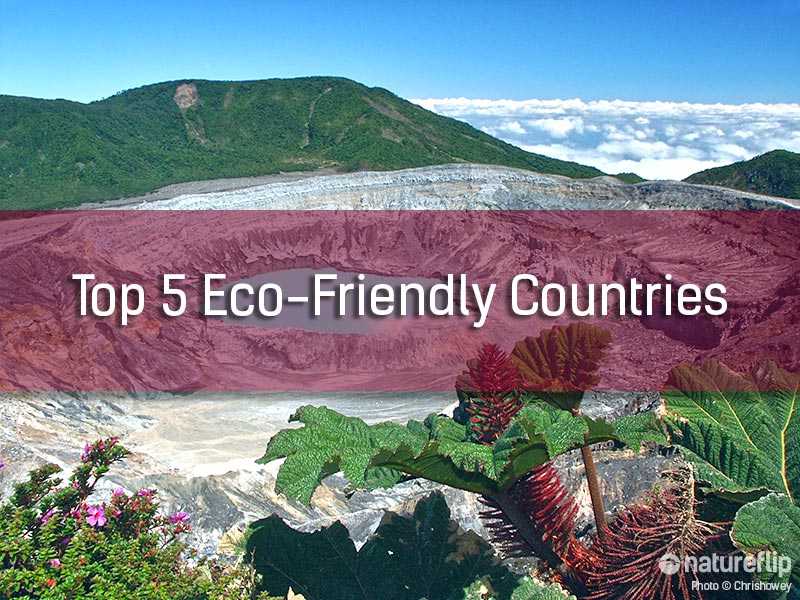Top 5 Eco-Friendly Countries

Eco-friendly countries are not just beautiful; they’re determined to stay that way. By implementing a range of laws and encouraging practices to protect the environment, reduce pollution and promote the use of renewable energy sources, these countries are some of the best in the world at protecting their superb landscapes for future generations.
So here's top five eco-friendly countries:
1. Switzerland
Switzerland ranked top in the Environmental Performance Index (EPI)[1] 2012. Its fragile environment with some of the strictest carbon emission laws in the world, and takes advantage of its natural geothermal for energy production. In total, 24.9% of its land[2] is designated as protected. Hikers and climbers will be thrilled by its exceptional air and water quality, its biodiversity and ecosystem vitality, whether climbing Mount Matterhorn or relaxing by Poschiavo Lake.
2. Latvia
Latvia ranked second in 2012 with an EPI score of 70.37. With 18% of its landmass being designated as protected, Latvia has rich biological diversity: over 27,700 registered flora and fauna species. It has its own CO2 filter in the form of 35,000km2 (21,747 square miles) of mires, peat bogs and forests, which convert carbon dioxide to biomass. Its capital Riga is said to be the cleanest European city, but nature lovers might like to visit the Kemeri National Park, featuring a Ramsar wetland site for birdwatchers, natural mineral springs and mud.
3. Norway
Norway ranked third (69.92): most of its energy comes from hydroelectric plants, a sustainable and non-polluting power source; and the purity of Norway’s water and great sanitation make it one of the cleanest and healthiest countries. Among its 14.6% of protected land, one top eco-attraction is Hardangerfjord, the second largest Norwegian fjord, recognised for its conservation efforts and rural land preservation. The fjord has more than 100 miles of snow-capped mountains, glaciers and waterfalls to explore through boat trips, guided tours, fishing and kayaking.
4. Luxembourg
Luxembourg ranked fourth with an EPI score of 69.2. Known as the Green Heart of Europe, Luxembourg has designated 20% of its land as protected, and a third of the country is covered by untouched woodland. Environmentally-friendly tourism is promoted through the EcoLabel scheme, for example through campsites designed to save energy, use renewable sources and reduce water consumption. The country has more than 370 miles of dedicated cycling lanes, including along the banks of the Moselle.
5. Costa Rica
Costa Rica scored 69.03 on the Environmental Performance Index. Its twenty national parks, eight biological reserves and other designated areas protect 20.9% of its land, and the country focuses on protecting its huge biodiversity and rainforest while supporting local people. With some of the cleanest air in the world, enjoy activities such as horseback riding, hiking forested, mountainous paths or bird-watching tours; or visit Tortuguero National Park, famous for its nesting sea turtles. Even its hotels are eco- friendly, designed to blend in with the surrounding environment and to minimize pollution.
Sources:
[1] Yale University’s Environmental Performance Index ranks countries out of 100 in terms of their environment, air pollution, water quality, biodiversity, management of natural resources and climate change.
[2] Terrestrial protected areas (% of total land area) taken from The World Bank, http://data.worldbank.org/indicator/ER.LND.PTLD.ZS